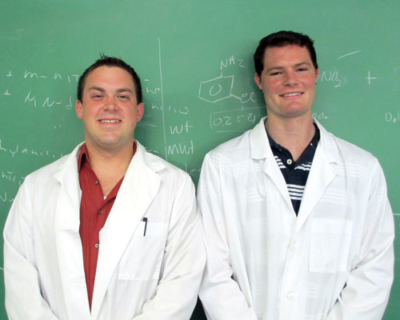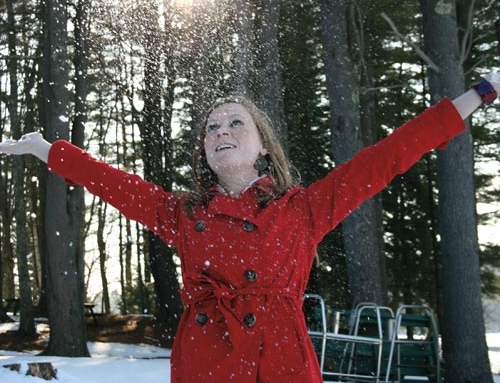 With its temperamental climate, Standish, Maine, feels like it belongs to an entirely different universe when compared to sunny Cape Canaveral, Fla., and Houston, Texas, the two cities most commonly associated with the National Aeronautics and Space Administration (NASA). But at Saint Joseph’s, two students recently earned substantial scholarships from the government with out-of-this-world research projects they are conducting on campus this summer.
With its temperamental climate, Standish, Maine, feels like it belongs to an entirely different universe when compared to sunny Cape Canaveral, Fla., and Houston, Texas, the two cities most commonly associated with the National Aeronautics and Space Administration (NASA). But at Saint Joseph’s, two students recently earned substantial scholarships from the government with out-of-this-world research projects they are conducting on campus this summer.
Biology majors Robert Michaud Jr. ’14 and Terence Cullen ’14 are the first Saint Joseph’s students to receive $3,000 scholarships from the Maine Space Grant Consortium, a nonprofit that funds research of interest to NASA through the congressionally established National Space Grant College and Fellowship Program.
“We are pleased and honored to have this opportunity,” says Michaud, whose research concerns the relationship between humans, animals and bacteria. “Bacteria will always be a part of our lives and will always be important to us,” he says, noting, “58 to 61 percent of all human pathogens are zoonomic, or derived from animals.” His work may be important to NASA’s efforts to use animals in biodome habitation and space colonization. Michaud was inspired when he, along with fellow scholarship recipient Cullen, embarked on Saint Joseph’s yearly service trip to Guatemala, led by theology professor Dr. Steven Bridge. There, Michaud witnessed the effects of bacterial infections on humans firsthand at a medical clinic where he and Cullen assisted Guatemalan residents.
Last summer, Cullen interned with a local plastic surgeon, often handling silicone gel implants. Now, his research calls for the use of the element silicon, and in an entirely different context.
Cullen is researching the cheapest route to the synthesis of siloles – organic compounds that emit a fluorescent blue glow and have properties that could lead to cheaper and more efficient LCD screens and solar panels, both being important technologies to spacecraft. The silole synthesis Cullen conducts in the College’s chemistry laboratories is a delicate process, taking him anywhere between three and 45 days to complete.
Meanwhile, Michaud is also using the campus to his full advantage. He has made significant progress with samples taken from the hands of Pearson’s Town Farm staff members.
According to Michaud, his and Cullen’s research is possible because “Saint Joseph’s community encompasses a useful and beneficial environment for learning.” He adds that “it’s a phenomenal experience to be a researcher” – experience that he and Cullen will use as they continue toward their futures as a neurologist and dermatologist, respectively.
In the meantime, Michaud and Cullen are busy. With the help of NASA and Saint Joseph’s, they are doing research that could change the world – and other worlds, too.
by Nico Tarquinio ’10
